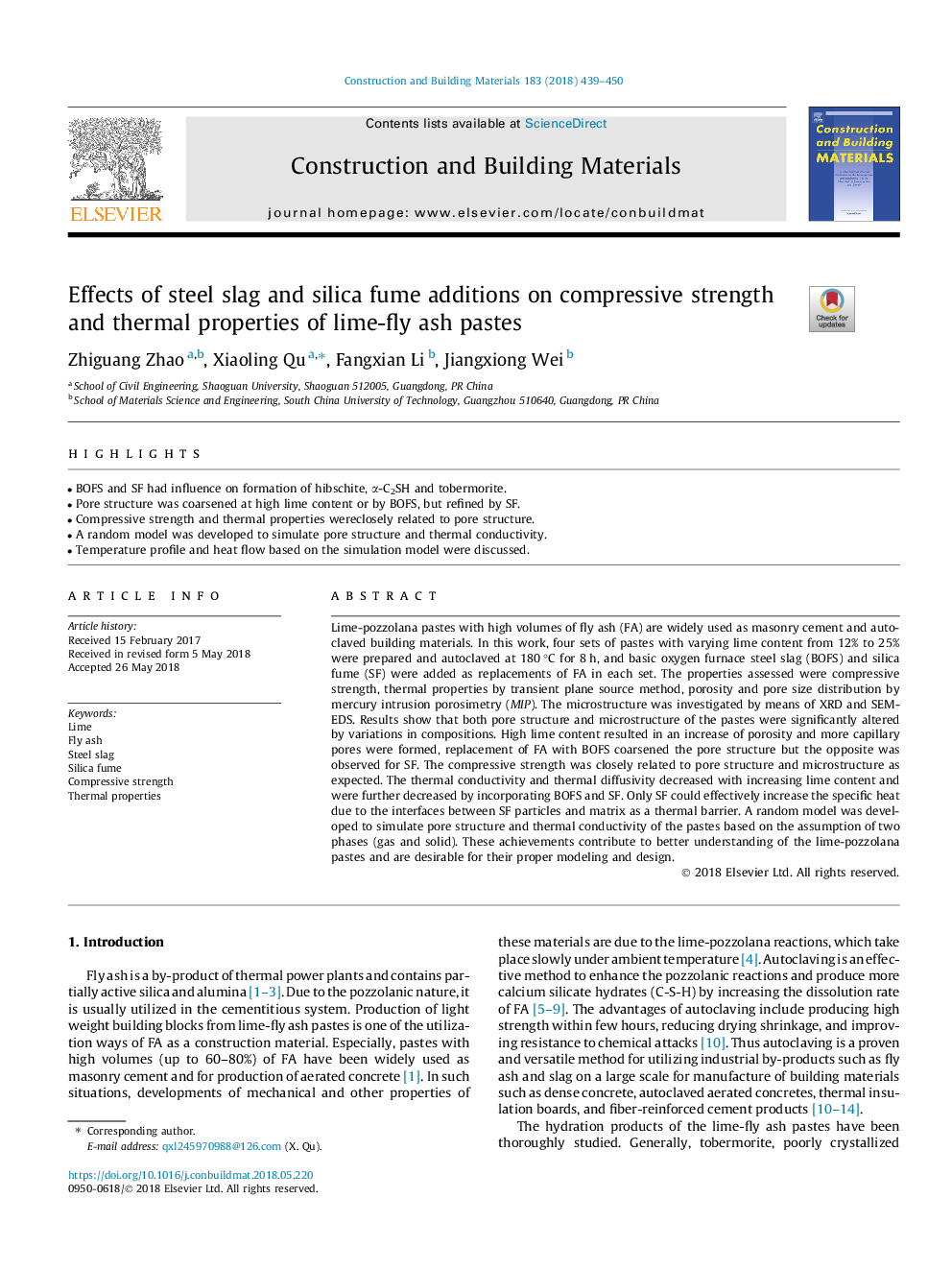| Article ID | Journal | Published Year | Pages | File Type |
|---|---|---|---|---|
| 6712231 | Construction and Building Materials | 2018 | 12 Pages |
Abstract
Lime-pozzolana pastes with high volumes of fly ash (FA) are widely used as masonry cement and autoclaved building materials. In this work, four sets of pastes with varying lime content from 12% to 25% were prepared and autoclaved at 180â¯Â°C for 8â¯h, and basic oxygen furnace steel slag (BOFS) and silica fume (SF) were added as replacements of FA in each set. The properties assessed were compressive strength, thermal properties by transient plane source method, porosity and pore size distribution by mercury intrusion porosimetry (MIP). The microstructure was investigated by means of XRD and SEM-EDS. Results show that both pore structure and microstructure of the pastes were significantly altered by variations in compositions. High lime content resulted in an increase of porosity and more capillary pores were formed, replacement of FA with BOFS coarsened the pore structure but the opposite was observed for SF. The compressive strength was closely related to pore structure and microstructure as expected. The thermal conductivity and thermal diffusivity decreased with increasing lime content and were further decreased by incorporating BOFS and SF. Only SF could effectively increase the specific heat due to the interfaces between SF particles and matrix as a thermal barrier. A random model was developed to simulate pore structure and thermal conductivity of the pastes based on the assumption of two phases (gas and solid). These achievements contribute to better understanding of the lime-pozzolana pastes and are desirable for their proper modeling and design.
Related Topics
Physical Sciences and Engineering
Engineering
Civil and Structural Engineering
Authors
Zhiguang Zhao, Xiaoling Qu, Fangxian Li, Jiangxiong Wei,
